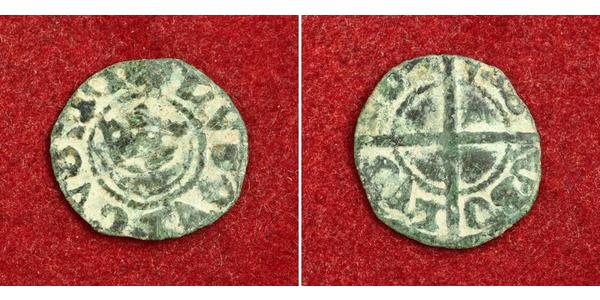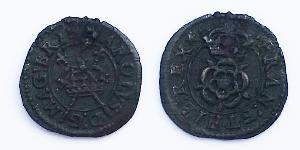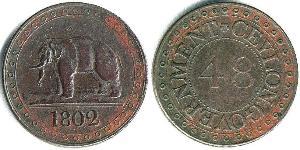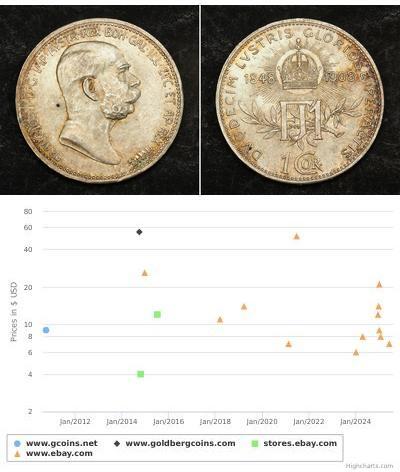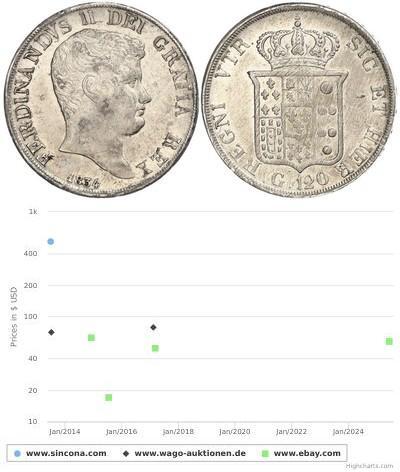(продана за $5.0)
1624, France, Lorraine (Duchy), Charles IV & Nicole. Copper Obol Coin. F-VF!
Mint Place: Nancy Denomination: Obol References: KM#25-27. Mint Period: 1624-1625 Condition: Deposits in fields, greenish patina (vendigris), otherwise F-VF! Material: Copper Diameter: 14mm Weight: 0.46gm
Obverse: Crown on double-corss within inner circle. Legend around. Reverse: Long cross on inner circle. Legend around.
The rulers of Lorraine have held different posts under different governments over different regions. The first rulers of the region were kings of the Franks whose kingdom was called Lotharingia. The Latin construction "Lotharingia" evolved over time into "Lorraine" in French and "Lothringen" in German. After the Carolingian kingdom was absorbed into its neighbouring realms in the late ninth century, dukes were appointed over the territory. In the mid-tenth century, the duchy was divided into Lower Lorraine and Upper Lorraine, the second of which became known as the Duchy of Lorraine and existed well into the modern era.
Authenticty unconditionally guaranteed.
Charles IV (April 5, 1604 – September 18, 1675) was Duke of Lorraine from 1624 to 1634, when he abdicated under French pressure in favor of his younger brother, and again from 1661 until 1675. He came to lose his duchy because of his notionally anti-French policy for in 1633, French troops invaded Lorraine in retaliation for Charles's support of Monsieur Gaston—who repeatedly plotted against Richelieu's governance of France under the childless Louis XIII and treated dangerously with its enemies as a young heir apparent—and Richelieu's policies were always anti-Habsburg so as to increase the strength and prestige of France at the expense of the two dynasties. Gaston d'Orléans, frequently sided with either branch of the Habsburg family against Richelieu, who was de facto ruler of France as its Chief Minister, and had to flee several times to avoid charges and trial for treason. His allies and confederates generally bore the price of these escapades by the young and impetuous heir and Charles IV was one such.
In that circumstance and sense, Charles was a casualty of the fierce factional infighting in the French court between the Kings' brother Gaston d'Orléans, and Cardinal Richelieu, even though technically, Lorraine was subject to the Holy Roman Empire and the Emperor Ferdinand II of Austria. Forced to make humiliating concessions to France, he abdicated under the French pressure and invasion in 1634 in favor of his brother and entered the imperial service in the Thirty Years' War.
In 1651 Charles IV was approached by an Irish delegation who were seeking his support to defend Ireland from the invasion of the Parliamentarian army of England. Traditional accounts of the Cromwellian wars often dismiss the appeal to Lorraine as an act of desperation, but recently one historian has argued that the stateless Duke was in fact seriously interested in becoming the Protector of Ireland[1]. In the summer of 1652, a number of ships sent by Charles arrived at Inishbofin island with supplies, one of the last strongholds of the Irish. Unfortunately Charles faced great opposition by the Irish Leaders Clanricarde and Ormonde, both of whom were arch-royalists loyal to Charles II of England. Lorraine eventually concluded that Ireland had been destroyed by the jealousy of those who desired the loss of it, than they should be obliged for its recovery to the protection of his said Highness.
In 1670, the duchy was again occupied by the French under the Sun king, Louis XIV. He served in the Imperial armies in both the Thirty Years' War and the Franco-Dutch War (1672–1678), both of which added to the power of France.
In 1675 he defeated François de Créquy at Konzer Brucke, and died the same year in Austrian service. The duchy was not restored to his family until more than twenty years later.
Nicole de Lorraine (3 October 1608 – 2 February 1657) was Duchess of Lorraine and Bar from 1 August 1624 to 21 November 1625, and Duchess consort in 1625–1634. She was born in Nancy, the daughter of Henry II, Duke of Lorraine and Bar, and Margerita Gonzaga. She died in Paris.
Her father had no son and wanted to leave the Duchy of Lorraine to Nicole, but a supposed testament by René II of Lorraine specified that the duchy could not bypass the male lineage. After negotiations with the male heirs, she married Charles IV, Duke of Lorraine, the eldest son of Francis, Count of Vaudémont on 23 May 1621. They had no children.
His situation was complicated by the death of Henry II, 31 July 1624. She thereby became duchess of Lorraine. In November 1625, Francis, Count of Vaudémont, based on the "testament" of Rene II, claimed the duchy. The States-General of Lorraine felt it a legitimate request and Francis became Duke on 21 November 1625. Five days later, he abdicated in favor of his son, who became Duke Charles IV of Lorraine. The latter had managed to remove his wife's power and become Duke in his own right.
Married by dynastic interest, the gap between Nicole and her husband grew with the events of 1625. Wishing to leave his wife, Charles tried in 1631 to have his marriage annulled by passing the death penalty - without proof - for witchcraft on Melchior of the Valley, the priest who had performed their marriage ceremony. But that injustice was not corroborated by The Church and Charles IV remained officially married to Nicole.
In 1635, Charles took the opportunity to get rid of his wife's authority, the false pretext that he had not been free to choose at the time of his marriage but did not persuade the papacy to annul the marriage.
Nicole spent the last years of her life in Paris, where she died.

|
Добавив:
anonymous 2018-08-28 |

